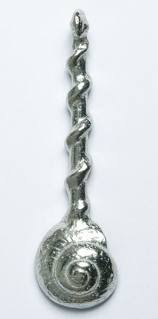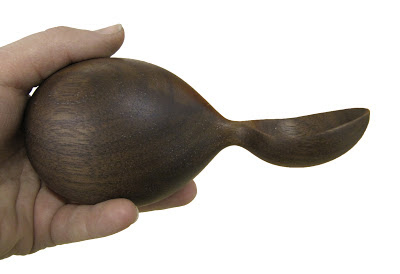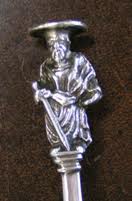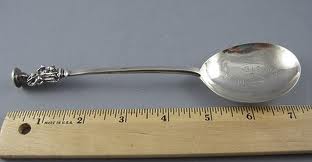
These natural clay spoons, when assembled into a display, become an exercise in pattern and form. Yet you could pluck any one out of the arrangement and use it.
No problem firing these!

I'm not sure what the material is used here, but this decoration is a great inspiration that transforms these spoons or dippers into art. Equally functional and artful.
This grouping with similar roundness of spoon bowls, yet varying sizes, similarity in handles, yet variations also in length and thickness still function as a grouping.
And these seem so organic, they could have been picked up on the seashore. Great interpretation and glaze.
Different handle length and uniformity in similar bowl size create a grouping, yet they all become very individual because of the free expression in decoration.
I like the onion-like lines on the spoon to the far right. Look at the negative space created by the length of white left on each handle.
With the two strong forms of the linear handle and the roundness of the bowl, there are two opportunities for endless decorations.
A slight segway here--
I have a 'thing' for shells. So, of course, I love these two examples of silver spoons with a shell motif.





















































